We ran with the Apple Watch Ultra vs Garmin Forerunner 965 in the London Marathon: Who won?
It's Apple Watch Ultra vs Garmin Forerunner 965 at the 2023 London Marathon — which came out on top?
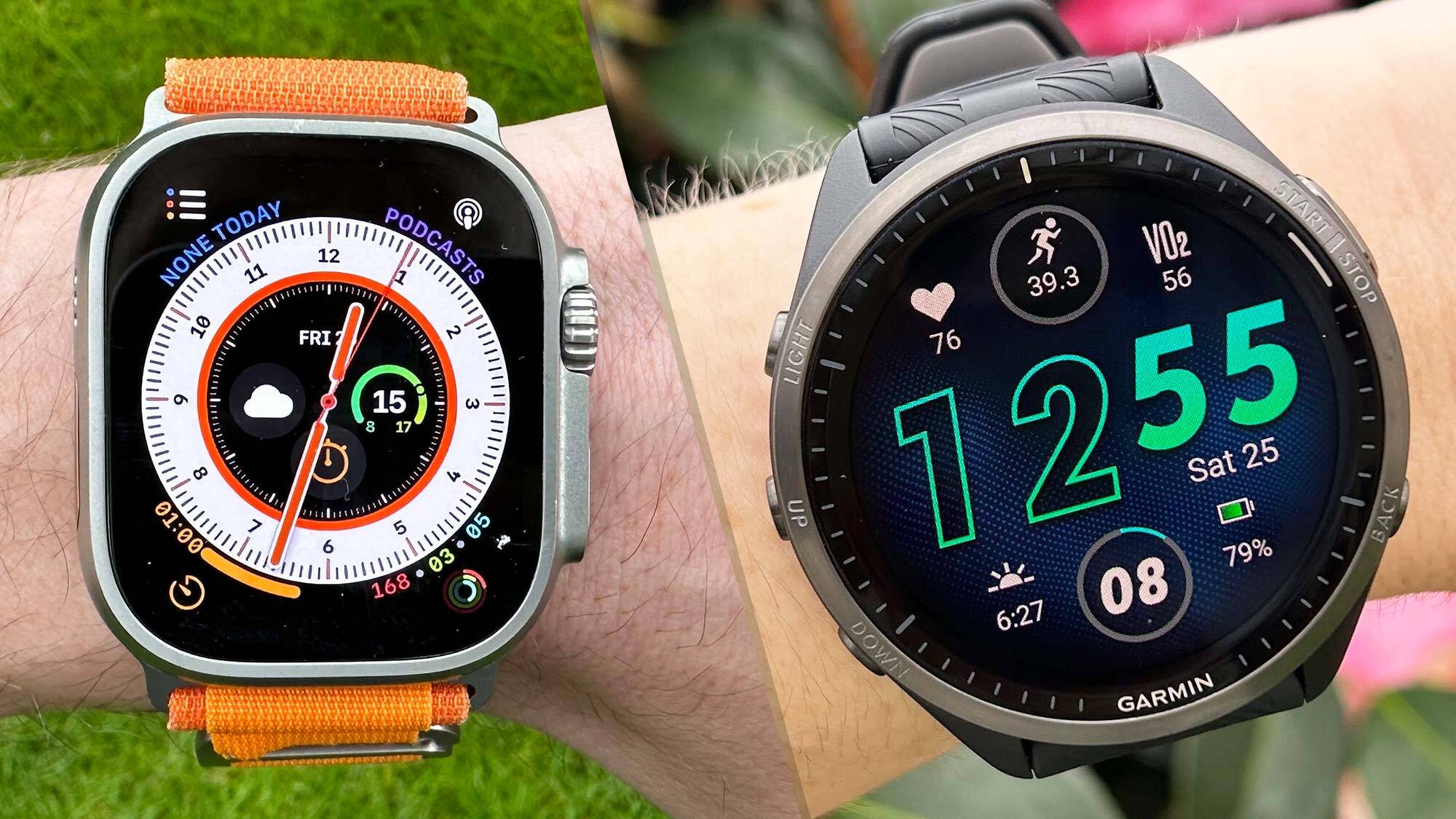
A week has passed since the TCS London Marathon and thousands of runners are reliving their performance as they pore over their splits and heart-rate zones.
More than 40,000 people took part in the 26.2-mile run around some of London’s most iconic landmarks. Myself and Tom’s Guide Fitness Editor Jane McGuire were among them. And it seemed like the perfect opportunity to put some marathon running tech to the test.
Crucially, both of us wanted to have all of our run metrics recorded so we could see where we performed well and where we struggled. We picked two of the best smartwatches money can buy and strapped them on for the marathon. I was wearing the Apple Watch Ultra and Jane opted for the Garmin Forerunner 965.
Both of these devices are aimed at exercise enthusiasts, but there are a few key differences that you’ll want to consider if you’re planning to buy one for yourself. Taking on board the fact Jane is a (vastly) more accomplished runner than me, it was interesting to compare the two smartwatches to see which one came out on top.
Here’s a full breakdown of everything you need to know before making a purchase decision as well as our thoughts on how they performed on the day.
Apple Watch Ultra vs Garmin Forerunner 965: Price and availability
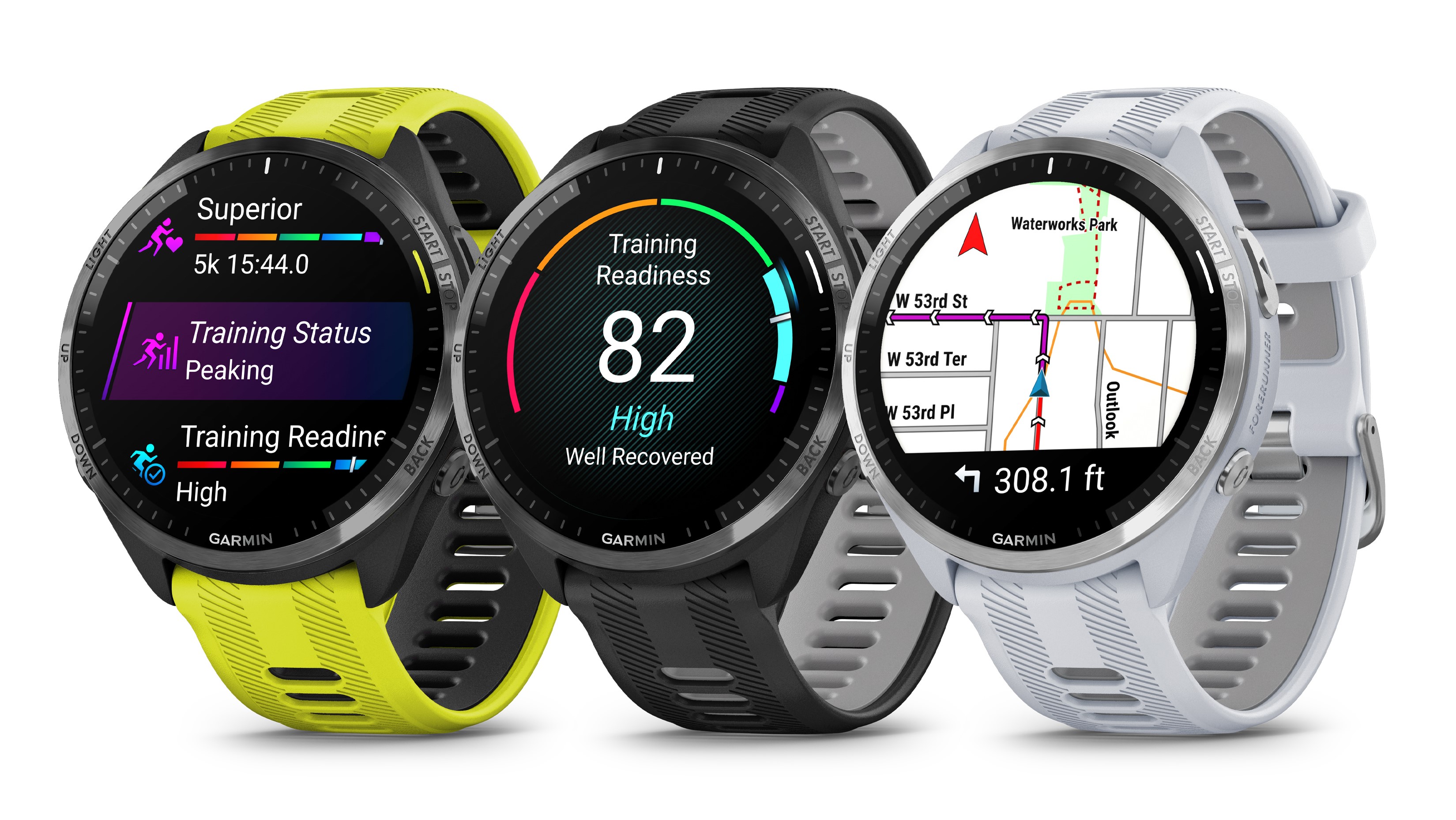
The Garmin Forerunner 965 was launched only last month in March 2023, and costs $599/£599/AU$899. The Apple Watch Ultra burst onto the scene last September and costs $799/£849/AU$1299. That’s a fairly sharp contrast and something to bear in mind if you’re on a budget.
The prices are static as there’s only one model available of each watch. The Apple Watch Ultra comes with a 49mm/1.9 inches titanium case and choice of either an Alpine, Trail or Ocean band in various colors. Meanwhile, the Garmin arrives with a 47.2mm/1.4 inches titanium case and a choice of yellow, black or white silicone band strap.
Get instant access to breaking news, the hottest reviews, great deals and helpful tips.
Both watches are available from their manufacturers as well as assorted third-party retailers.
Winner: Garmin. The clear winner here in terms of price is the Garmin, which comes in $200 cheaper than the Apple Watch Ultra. If you’re after a marathon-tracking watch and want to save some cash, opt for the Garmin.
Design, display and usability
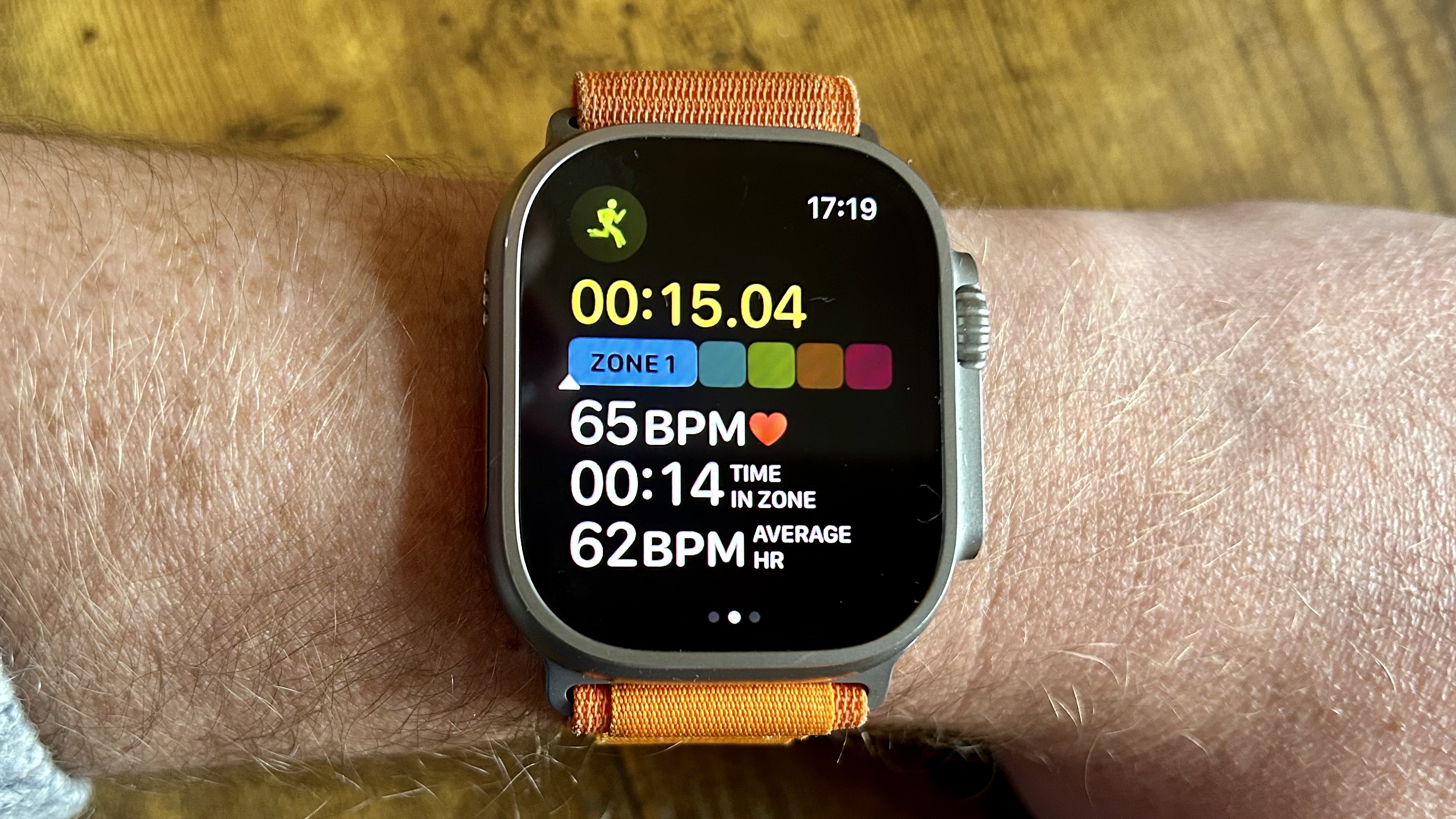
Both the Apple Watch Ultra and Garmin Forerunner 965 hew closely to past models when it comes to the design, but the Apple Watch has made the greatest change.
If you place the Forerunner 965 up against the 955, it’s hard to spot the difference. Both are controlled by five buttons (three on the left, two on the right) and a touchscreen. However, the Forerunner 965 is slightly bigger — 47.2mm/1.4 inches, compared to 46.5mm/1.3 inches on the Forerunner 955.
Meanwhile, the Apple Watch Ultra may sport the same squircle-shaped screen as the Apple Watch Series 8, but there are a few key differences. It’s larger, at 49mm/1.9 inches and the digital crown is bigger with deeper groves. It melds with the side button in a protruding ledge on the right side of the device. This supposedly makes the buttons easier to use while wearing gloves. On the left side of the Apple Watch Ultra is an added action button, which can be programmed as a quick-launch for an assigned purpose.
The added screen real estate, not to mention the usability bonus of the action button were crucial during the marathon. I was able to use the action button to start tracking my run straight away and it doubles up as a way to manually record your laps quickly and efficiently.
I was more focused on getting through the race, so I let the Apple Watch do its thing solo. This turned out to be a bit of an error as I was too hasty activating the workout so, as the race progressed, my watch readouts strayed further and further from the official mile markers. However, the bigger screen gave me more data fields so I could keep an eye on my distance, pacing and average speed. What’s more, with 2,000 nits of brightness, I could see everything even in direct sunlight. Which, admittedly, we didn’t get much of on the day.
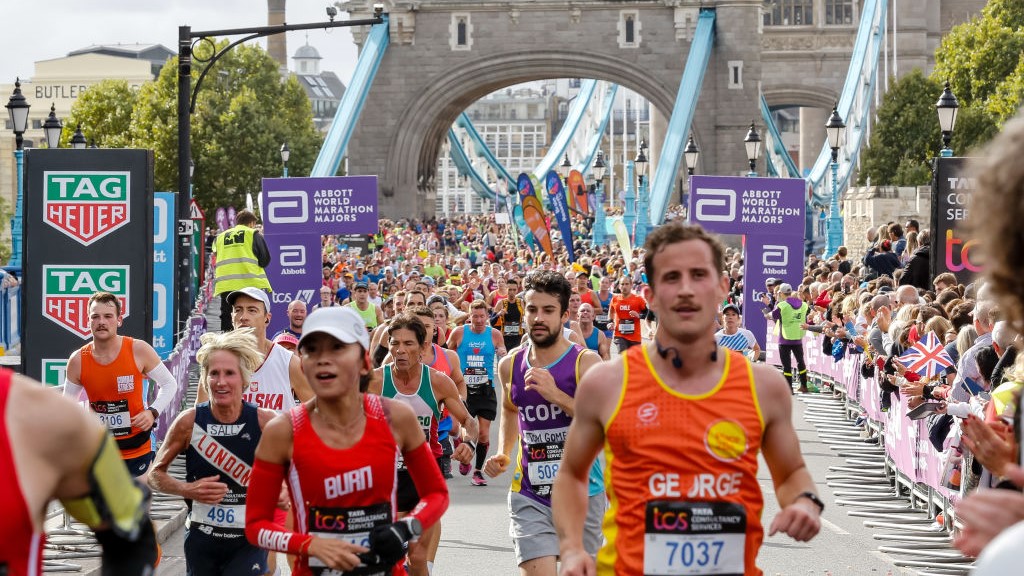
Meanwhile, Jane used the Garmin’s bottom right back button to physically mark her miles around the course. The Forerunner 965’s touchscreen is automatically disabled during activities but Jane was particularly impressed with its AMOLED display which, she reminded me, has a resolution of 454 x 454 pixels and is extremely bright and easy to see in all weather conditions.
Here's how she described it: "The trusty lap button I swear by — I’ll caveat the next paragraph by saying this is completely a user error, not a Garmin error.
"In order to use the lap button on your watch, you need to turn Auto Lap off. I’d forgotten to do this and didn’t realize until my watch buzzed a little before the one-mile marker. As a result, the watch was auto-lapping, and I was manually lapping it. If you look at my Strava, I had 31 separate laps for the 26.2-mile race. It wasn’t ideal, and my brain struggled to do the math after the half way point.
"As it happens, this worked in my favor — I decided to not look at the watch and just run to feel, and ended up taking 14 minutes off my PR. That said, it’s a valuable lesson to learn, and a reminder that even someone who reviews Garmin watches for a living needs a lesson in setting up her watch for race day!"
Winner: Apple Watch Ultra. Thanks to its larger display and brightly colored, mappable action button, the Apple Watch Ultra takes the points for display and simple usability during the race.
Health and fitness features
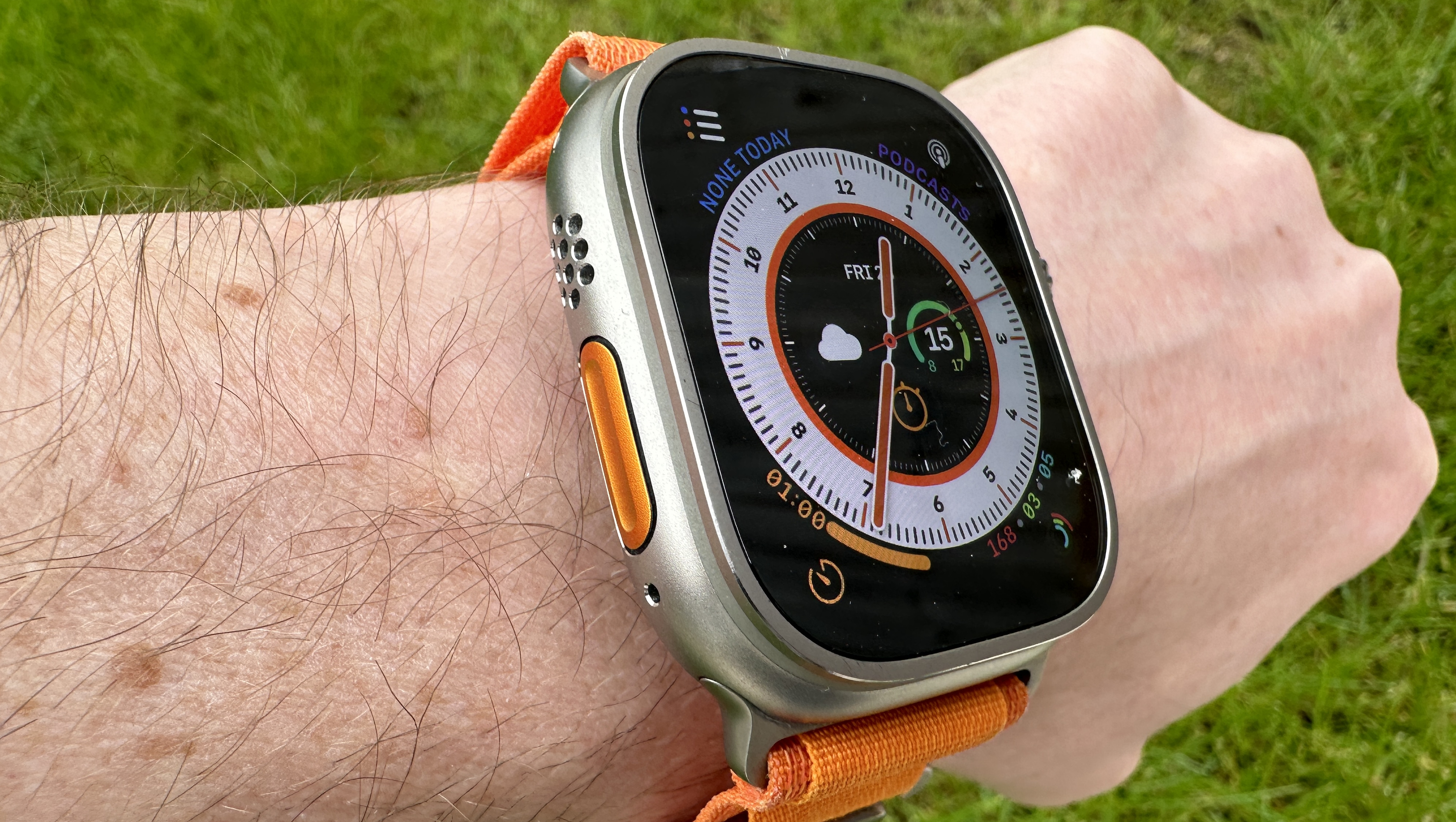
Right off the bat, I should point out the Apple Watch Ultra is a more rounded activity-focused smartwatch than the Forerunner which is, as the name implies, a more dedicated running watch. After all, you’re not going to take the latter diving.
Apple added dual-frequency GPS to the watch, integrating L1 and L5 algorithms, for “the most accurate GPS of any Apple Watch to date,” and it was one of the reasons I wanted to wear it for the race. A couple of sections of the route wind through tall buildings, which can crowd out the GPS.
I’m happy to report the Apple Watch Ultra didn’t drop my position at any point during these sections. I was able to keep a close eye on all the necessary metrics for long-distance running: my rolling mile pace, average pace and my distance so far. Metrics that got depressingly worse as the race wore on!
These same metrics were available to Jane, and her GPS was spot-on, too.
Here's what she thought of it:
"Things started well. Like every other year I’ve stood, freezing, in Greenwich Park waiting for my start pen to open, I lost all 3G phone signal, making it impossible to listen to a podcast (yes, I forgot to download it beforehand), or check in on the good luck messages from friends and family.
"My Garmin Forerunner 965 managed to find the GPS signal seamlessly, and I was able to connect it about 15 minutes before the start line to ensure it was ready the second I crossed that starting time mat.
"The GPS was pretty spot-on throughout the race. In the past, my watch has struggled the second I got into the Docklands part of the course, at around mile 16. Surrounded by skyscrapers, and thousands of other runners, in the past my watch has told me my splits were wildly different to the time I was running — something that can completely throw your race out if you trust it.
"Comparing my chip time to my watch splits, they were pretty accurate, up to Canary Wharf (around mile 20). My watch recorded one mile as 0.75 miles, and my pace at 9:05 minute miles, when I’d actually covered a mile at an 8:22 minute mile pace. I’ll let Garmin off for getting one mile wrong out of 26.2."

In addition, Jane was able to utilize a feature from Garmin that Apple doesn’t offer: LiveTrack.
LiveTrack allowed her to send a real-time location to my friends and family members via a text message, meaning they had another way of seeing exactly where she was on the course. She could send the link to a LiveTrack map to up to 50 people.
In my case, the official TCS London Marathon app (which tracks you through your bib chip) dropped my position a couple of times. Cue various family members messaging each other (and me) wondering if I'd stopped running at one stage. I hadn't.
Winner: Tie. Both the watches recorded solid metrics and accurate GPS throughout the run. If you’re looking for a sports watch to give you detailed and solid feedback, both Apple and Garmin can supply it.
Battery life and performance

Marathon day will punish a smartwatch's battery life. Obviously you need the device to be working overtime (with GPS and an always-on bright display enabled) during the run - but it’s crucial that doesn’t wipe out the battery life for the rest of the day.
While both smartwatches are capable of lasting the entirety of the race (no matter how slow I ran), the Garmin easily outshines the Apple Watch Ultra when it comes to portable power.
The Forerunner 965 lasts 31 hours in GPS mode without music and 8.5 hours in GPS mode with music. Meanwhile, with everything on, the Ultra has a battery life of around 12 hours.
You can, of course, enable the Ultra's 60-hour battery life setting by reducing the frequency of GPS and heart rate readings if you're going to be away from an outlet for a while.
On marathon day, I woke at around 6 a.m. and strapped the Ultra on with 100% battery. By the time I'd got down to the start line and completed the race many hours later, I was sitting pretty at 60% battery. By the time I finally crawled into bed that night at around 10 p.m., my Ultra's battery had only just dipped below 50%.
But, all told, if it’s long-distance running, trail hiking or any other kind of endurance sport you’re looking at - the best bet is to go with the Forerunner 965.
"As expected, Garmin’s battery life didn’t let me down," Jane said.
"I charged the Forerunner 965 the night before, so started with a full battery on race day. I connected it to GPS about 15 minutes before I set off, had it record my run for three hours and 38 minutes, and wore it on my wrist for the rest of the day. The next morning, I was on 77%, so could easily go the rest of the week without having to charge it."
Winner: Garmin. The Garmin Forerunner 965 doesn’t offer the same level of smartwatch functionality as the Apple Watch Ultra, but just in terms of battery life, it absolutely trounces it.
Verdict
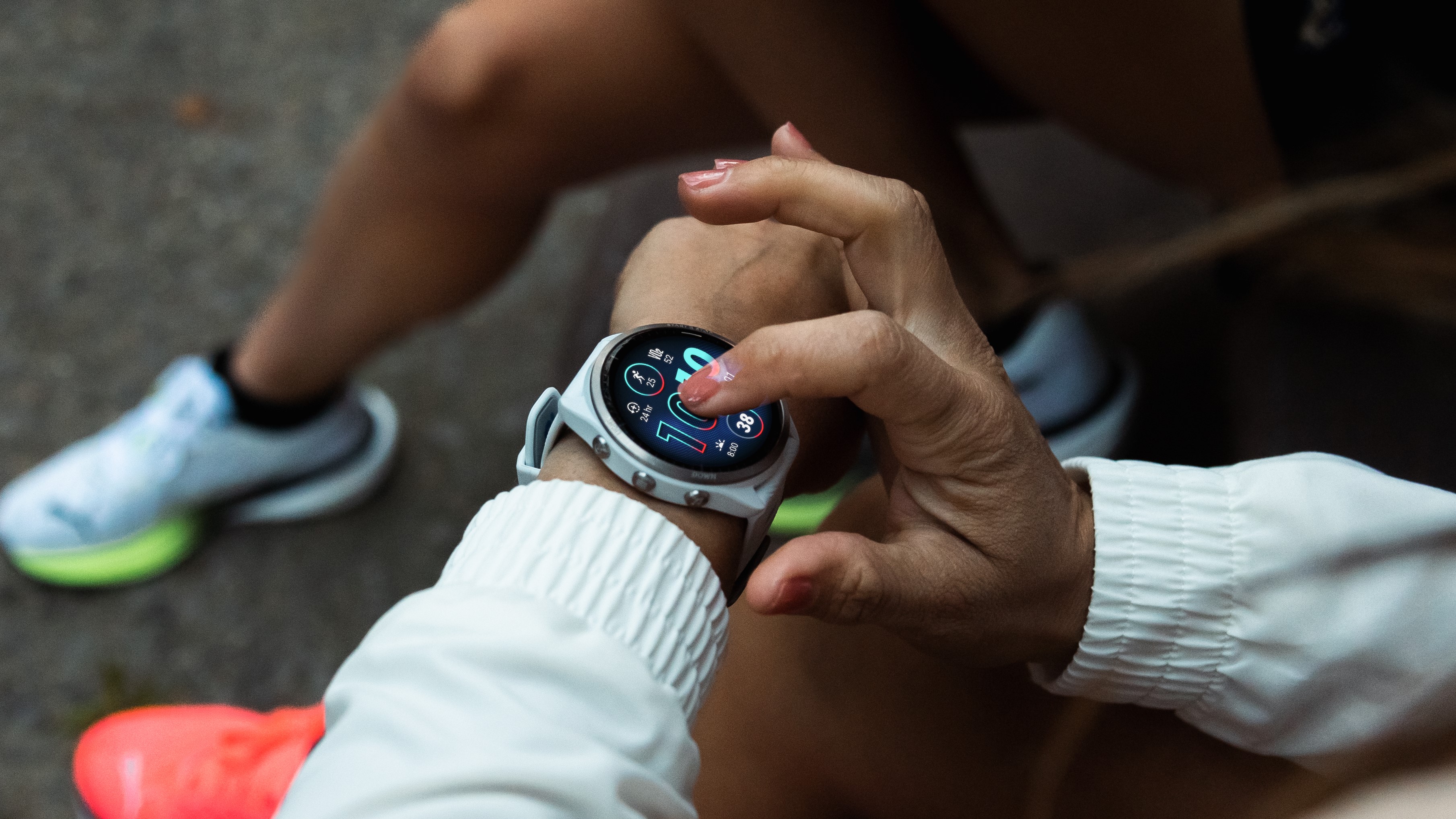
We’ve covered the merits of each of these smartwatches in greater detail elsewhere on Tom’s Guide, but when it comes to marathon running, the Forerunner 965 easily takes the crown. And it does so for a very simple reason: it’s an out-and-out runners watch with great battery, a fantastic screen and ubiquity across operating systems.
If you’re looking for a more multi-purpose adventure watch (and own an iPhone) then there’s every reason to consider the Apple Watch Ultra instead. Each Apple Watch model offers notifications, alarms, timers, an expansive app store, Siri and more. Garmin watches also offer basic features like notification mirroring, although the Garmin Connect app store is limited compared to Apple’s. And, there's Apple's excellent Fitness+ subscription service to consider if you want help getting into shape.
Would I have run the TCS London Marathon any faster if I’d strapped the Garmin to my wrist instead of the Apple? Unlikely, but then there’s always next year’s event waiting on the horizon for me to find out for sure.
More from Tom's Guide
- 5 gadgets I’m using to help me run the London Marathon
- How to use a massage gun on your legs after a marathon
- Apple’s next big fitness feature could be an AI-powered coaching service

Jeff is UK Editor-in-Chief for Tom’s Guide looking after the day-to-day output of the site’s British contingent.
A tech journalist for over a decade, he’s travelled the world testing any gadget he can get his hands on. Jeff has a keen interest in fitness and wearables as well as the latest tablets and laptops.
A lapsed gamer, he fondly remembers the days when technical problems were solved by taking out the cartridge and blowing out the dust.
